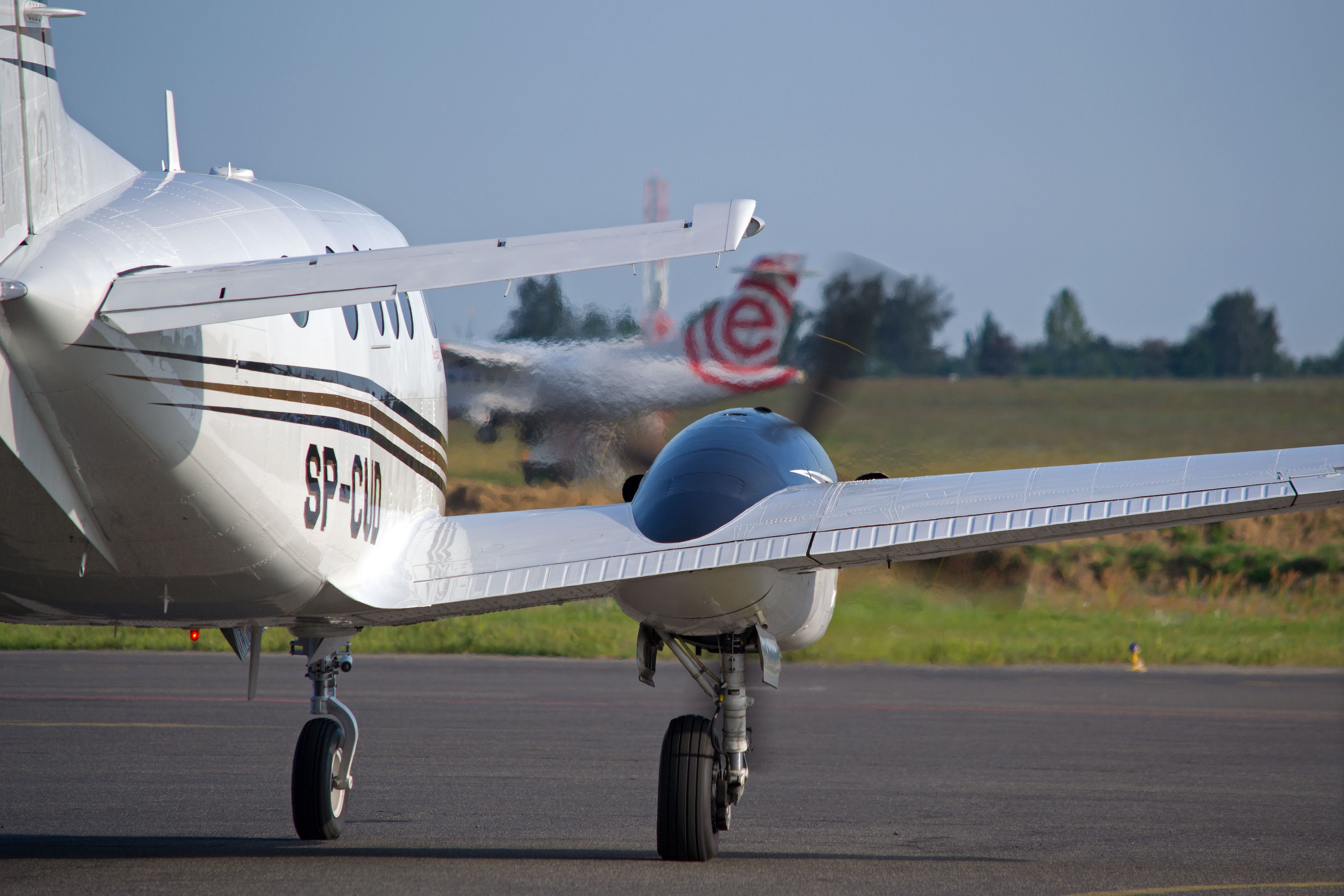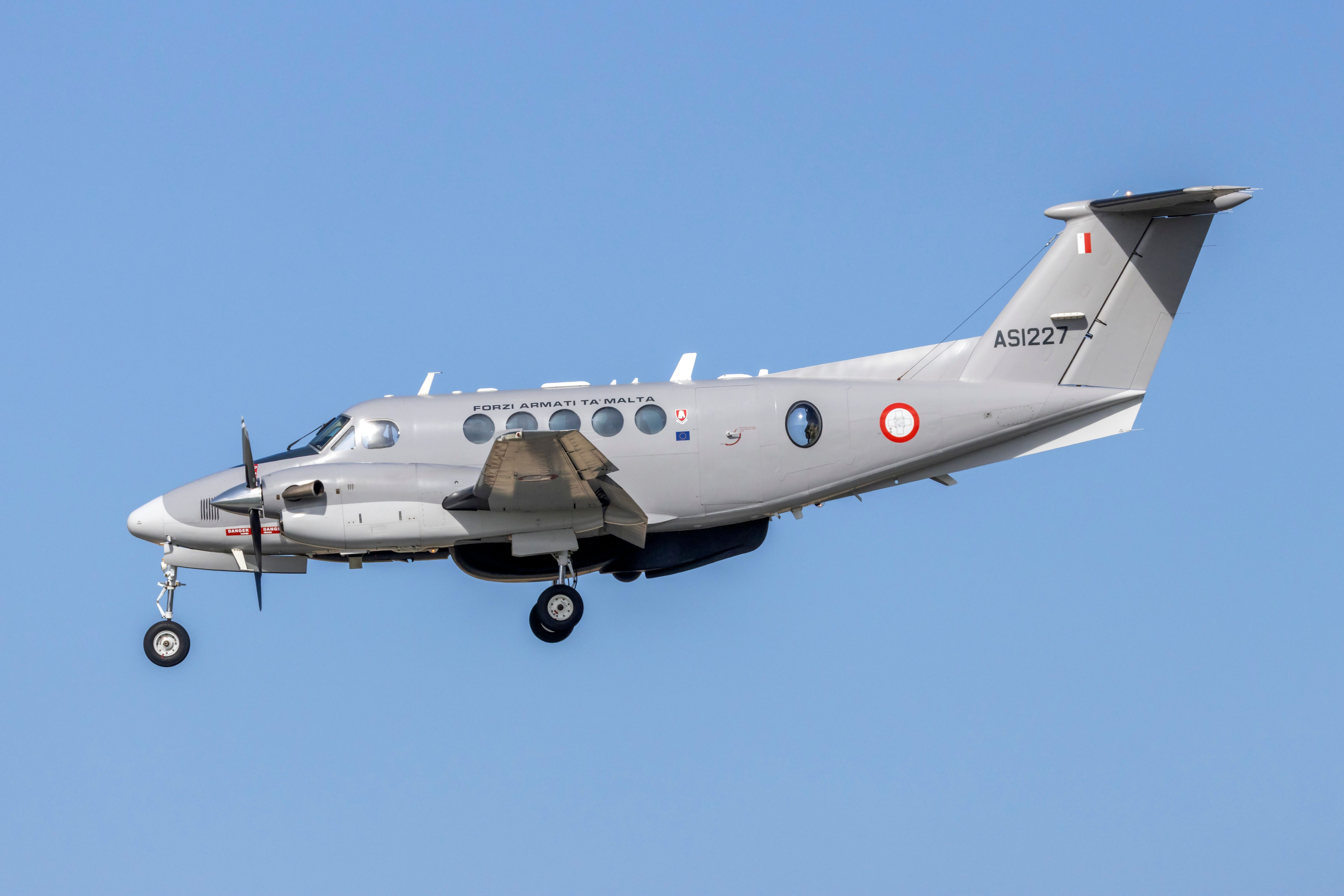Summary
- King Air excels in roles like transport, reconnaissance, and pilot training for the US Army and Navy.
- The RAF operates the modified King Air 350CER Shadow R1 for intelligence, surveillance, and reconnaissance missions.
- King Air serves diverse military roles, including transport, ISR, electronic warfare, training, and medical evacuation.
The Beechcraft King Air is a versatile and widely used aircraft known for its reliability and adaptability in various roles, including military operations. Several military forces worldwide utilize the King Air for different missions, ranging from transport to surveillance.
The Beechcraft King Air twin-turboprop has been in production since the 1960s. It is renowned for its ability to operate on short runways and for its capacity to carry out a variety of missions. Here is a list of six military organizations that operate the Beechcraft King Air.
1
United States Military
US Army and Navy fly the King Air for transport, reconnaissance, and training
Branches: The US Army and Navy are notable operators of the King Air. The Army uses it primarily as the C-12 Huron for transport and reconnaissance, while the Navy employs it as the T-44 Pegasus for pilot training.
Roles: Transport, reconnaissance, pilot training.
2
Royal Air Force (UK)
The Shadow R1 is a modified King Air 350CER
Aircraft Model: The RAF operates the Beechcraft Shadow R1, a modified King Air 350CER used for intelligence, surveillance, and reconnaissance (ISR) missions.
Roles: Intelligence, surveillance, reconnaissance.
The Beechcraft King Air 350CER is an extended-range version of the Model 350i with specific distinguishing features. Here are some key specifications:
|
Category |
Specification |
|---|---|
|
Length |
46 ft 8 in |
|
Wingspan |
57 ft 11 in |
|
Cabin Length |
19 ft 2 in |
|
Maximum Takeoff Weight (MTOW) |
16,500 lbs |
|
Fuel Capacity |
5192 lbs |
|
Range |
Normal: 1,878 nm, Maximum: 2,311 nm |
|
Rate of Climb |
2400 fpm |
|
Service Ceiling |
35,000 ft |
|
Maximum Speed |
303 knots (348 mph) |
|
Engines |
2x Pratt & Whitney Canada PT6A-60A |
|
Avionics |
Collins Aerospace Pro Line Fusion |
3
Royal Moroccan Air Force
King Air 100 aircraft equipped with the Garrett AirResearch TPE-331engine
Aircraft Model: The Moroccan Air Force operates six King Air A100s.
Roles: Likely used for transport and light reconnaissance.
4
Spanish Air and Space Force
The smaller King Air C90 is a nimble workhorse
Aircraft Model: The Spanish Air Force operates nine King Air C90s.
Roles: Transport and training missions.
5
Peruvian Air Force
Peru’s military flies the C90 for transport and reconnaissance
Aircraft Model: The Peruvian Air Force has three King Air C90s.
Roles: Likely used for transport and reconnaissance.
Photo: Konwicki Marcin | Shutterstock
6
Royal Thai Air Force
Thailand has one King Air C90 in its military fleet
Aircraft Model: The Thai Air Force operates at least one King Air E90.
Roles: Likely used for transport and utility missions.
Key Features and Capabilities
- Versatility: The King Air can perform various missions, including transport, medical evacuation, reconnaissance, and training.
- Performance: It can reach speeds of up to 270 mph and operate from short runways, making it suitable for diverse environments.
- Technology: Equipped with advanced avionics and navigation systems, enhancing its utility in military operations.
The Beechcraft King Air’s adaptability and performance have made it an asset for military forces worldwide. Its ability to fulfill multiple roles, from transport to ISR, ensures its continued use in various military applications. Each of the six militaries mentioned leverages the King Air’s capabilities to meet their specific operational needs, demonstrating the aircraft’s global appeal and effectiveness.
Photo: InsectWorld | Shutterstock
The Beechcraft King Air serves several critical roles in military operations due to its versatility and reliability. Here are the leading roles it fulfills:
- Transport and Utility: The King Air is widely used for transport and utility purposes. It can carry personnel and cargo and serve as a spacious medical evacuation aircraft. The King Air’s ability to operate on short runways enhances its utility in remote and austere environments.
- Intelligence, Surveillance, and Reconnaissance (ISR): The King Air can have advanced sensors and communication systems for ISR missions. This role involves gathering intelligence, conducting surveillance, and reconnaissance to support military operations. The US military, for instance, uses the King Air 350iER for such missions, which include aerial surveys, target acquisition, and battlefield surveillance.
- Electronic Warfare: Some variants of the King Air see service as electronic warfare platforms outfitted with electronic sensors, jammers, and communication equipment. This capability allows the aircraft to intercept and disrupt enemy communications and radar systems.
- Training: The King Air is also used as a pilot training platform. For example, the US Navy uses the T-44 Pegasus variant for training purposes, helping pilots transition to more advanced aircraft.
- Medical Evacuation and Air Ambulance: The King Air’s spacious and reconfigurable interior makes it suitable for medical evacuation and air ambulance roles. It can be quickly adapted to transport injured personnel or provide in-flight medical care.
- VIP Transport: The King Air provides reliable and comfortable transportation for high-ranking military officials and government personnel.
Overall, the Beechcraft King Air’s adaptability and performance make it an integral part of military operations across various roles, from logistical support to complex ISR missions.



